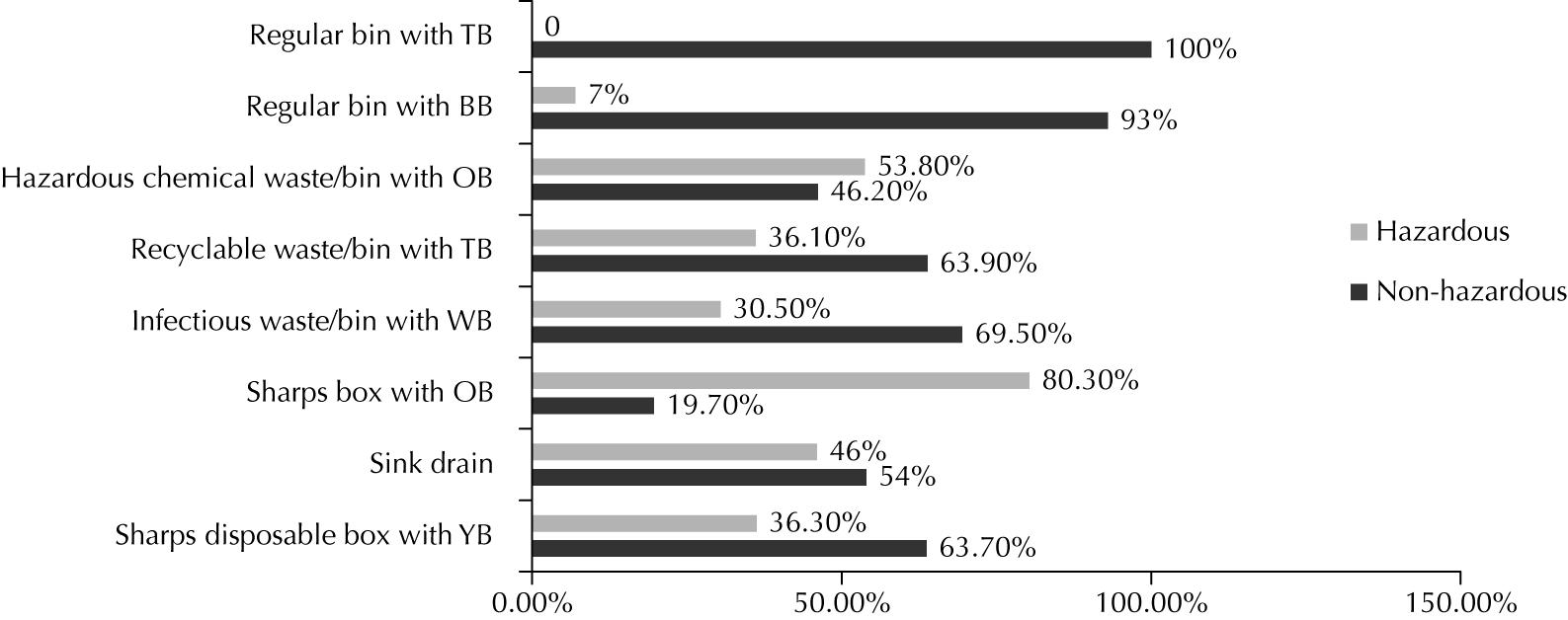Abstract
OBJECTIVE
To verify the disposal of pharmaceutical waste performed in pediatric units.
METHOD
A descriptive and observational study conducted in a university hospital. The convenience sample consisted of pharmaceuticals discarded during the study period. Handling and disposal during preparation and administration were observed. Data collection took place at pre-established times and was performed using a pre-validated instrument.
RESULTS
356 drugs disposals were identified (35.1% in the clinic, 31.8% in the intensive care unit, 23.8% in the surgical unit and 9.3% in the infectious diseases unit). The most discarded pharmacological classes were: 22.7% antimicrobials, 14.8% electrolytes, 14.6% analgesics/pain killers, 9.5% diuretics and 6.7% antiulcer agents. The most used means for disposal were: sharps’ disposable box with a yellow bag (30.8%), sink drain (28.9%), sharps’ box with orange bag (14.3%), and infectious waste/bin with a white bag (10.1%). No disposal was identified after drug administration.
CONCLUSION
A discussion of measures that can contribute to reducing (healthcare) waste volume with the intention of engaging reflective team performance and proper disposal is necessary.
Descriptors
Medical Waste; Pharmaceutical Preparations; Pediatric Nursing


